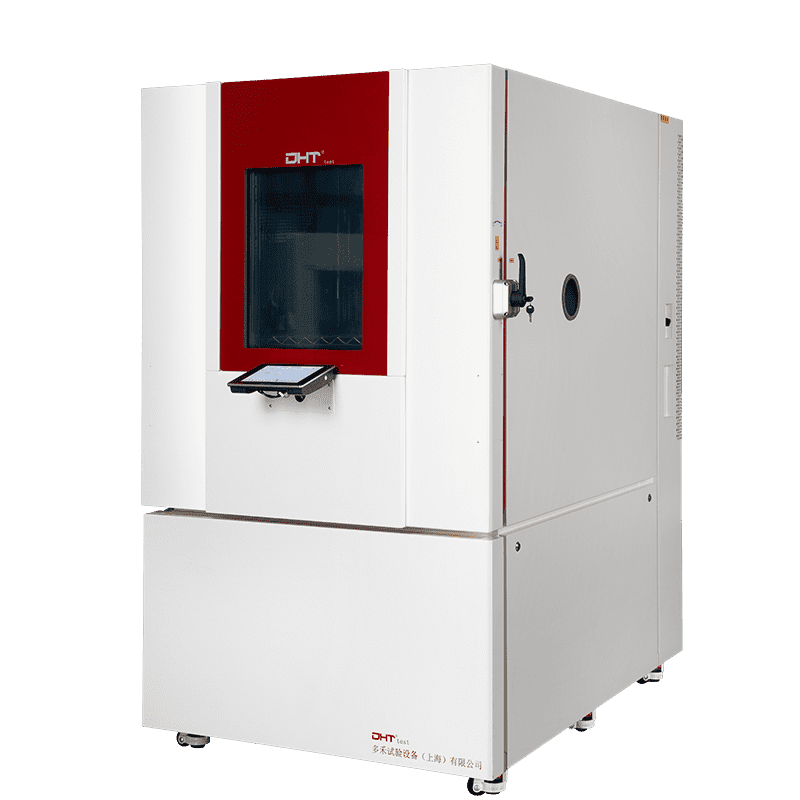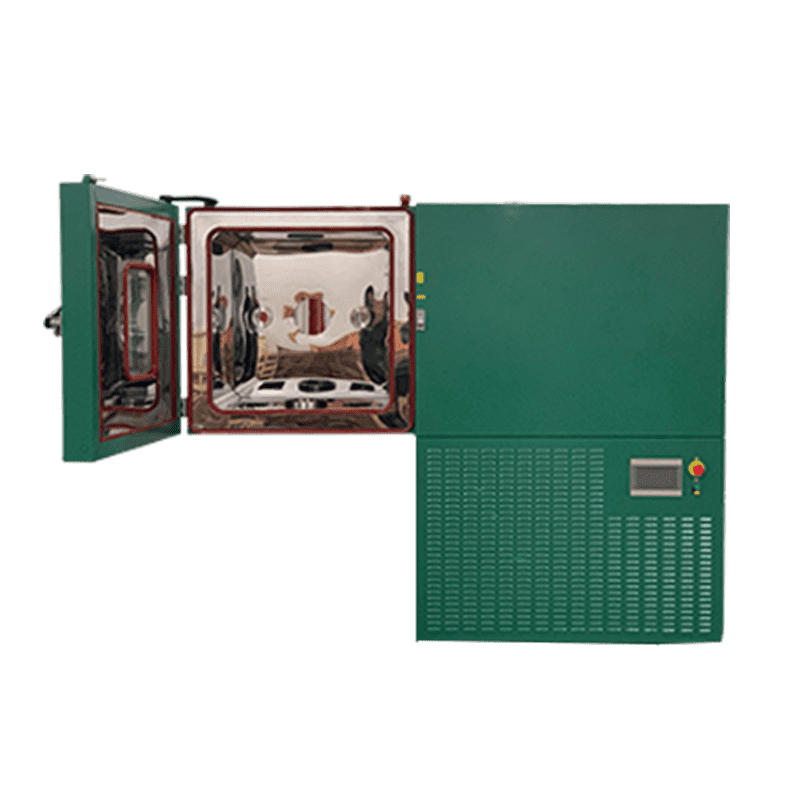Écrit par Robin
Ingénieur principal, Doaho Test (DHT®)
Dans le développement, la validation et le contrôle qualité des produits industriels, les tests de fiabilité sont devenus une partie essentielle pour garantir des performances constantes dans des conditions réelles. En particulier dans des industries telles que l'électronique automobile, l'aérospatial, les nouvelles énergies et la fabrication de précision, les chambres d'essai de vibration sont largement utilisées pour simuler les contraintes mécaniques dynamiques et évaluer la durabilité structurelle et la durée de vie des produits. Lorsqu'il s'agit de reproduire des environnements multi-stress complexes - comme la vibration combinée à la température et l'humidité -les chambres d'essai climatiques de vibration sont des outils puissants qui aident les ingénieurs à identifier les faiblesses latentes à l'échelle du système.
Mais que peuvent exactement révéler les tests de vibration? Du point de vue de l'ingénierie, cet article décrit la valeur fondamentale des chambres de vibration pour découvrir des problèmes de fiabilité cachés tout au long du cycle de vie d'un produit.
Fixations lâches et défaillances des composants structurels
Sous vibration prolongée ou à haute fréquence, les éléments de fixation mécanique - tels que les vis, écrous, clips et connecteurs - peuvent se desserrer ou se casser. Ces problèmes sont souvent cachés et peuvent passer inaperçus lors de l'assemblage.
Les tests de vibration simulent des conditions telles que les chocs de transport, les vibrations induites par le moteur, et la résonance structurelle pour exposer rapidement :
- Des connexions filetées sans conception anti-desserrage qui se desserrent progressivement au fil du temps
- Défaillance du clip causée par la fatigue du matériau ou des incohérences de tolérance
- Mauvais contact entre les pièces structurelles, entraînant des cliquetis ou une propagation de fissures sous contrainte de vibration
Cela est particulièrement critique pour les assemblages liés à la sécurité des véhicules - tels que les systèmes de batterie, les unités de contrôle de puissance, et l'électronique à bord - où l'intégrité structurelle doit être rigoureusement validée à l'aide de tests de vibration.
Fissures de joints de soudure et intermittence électrique
Le stress induit par les vibrations peut entraîner des micro-fissures, des joints de soudure froids, et un mauvais contact dans les systèmes électriques. Ces défauts latents sont souvent invisibles à l'œil nu et nécessitent un stress dynamique pour être révélés.
Les problèmes courants incluent :
- Fissuration par fatigue aux joints de soudure, surtout lorsque le support mécanique est insuffisant
- Soudure froide ou adhésion faible qui provoque une résistance de contact fluctuante
- Déconnexion intermittente dans les FPC (circuits imprimés flexibles) ou connecteurs miniatures en raison d'un contact instable sous vibration
Pour les produits avec une intégration électrique à haute densité - tels que l'électronique grand public, les systèmes d'infodivertissement automobile, et les contrôleurs industriels - les tests de vibration sont essentiels pour vérifier la fiabilité de la soudure.
Fatigue du matériau et propagation des microfissures
Le stress cyclique dû à la vibration peut entraîner une accumulation de fatigue dans les composants structurels, entraînant des microfissures qui finissent par devenir des fractures complètes. Les chambres d'essai de vibration sont efficaces pour simuler ce chargement dynamique et évaluer les limites de fatigue du matériau.
En effectuant des balayages de fréquence et des rampes d'accélération, les tests de vibration aident à identifier :
- Concentrations de stress localisées dues à la résonance dans les composants structurels
- Fatigue précoce à l'interface de matériaux dissemblables (par exemple, métal et plastique) causée par un décalage thermo-mécanique et des vibrations
- Défauts initiaux dans des pièces moulées ou estampées qui se propagent rapidement sous des charges vibratoires
En simulant les contraintes de vibration dès le début du développement, les ingénieurs peuvent optimiser la sélection des matériaux et la disposition structurelle pour réduire les taux de retouche et les réclamations de garantie.
Défaillances de contact des connecteurs et des bornes
Avec la tendance croissante à la modularisation et miniaturisation des produits, le nombre de connecteurs internes a considérablement augmenté. La fiabilité des connecteurs impacte directement la performance globale du système, et les environnements de vibration sont souvent la cause principale de la défaillance.
Les chambres d'essai climatiques de vibration, combinant température, humidité et vibration, peuvent exposer les modes de défaillance typiques tels que :
- Fatigue des contacts à ressort conduisant à une force de rétention réduite et une mauvaise connectivité
- Augmentation de la résistance de contact due à l'usure du revêtement ou à la destruction de la couche d'oxydation
- Défaillance des mécanismes de coque ou de serrure sous stress thermo-vibratoire combiné
Effectuer un dépistage par vibration sur les interconnexions du système entier peut découvrir ces faiblesses tôt, améliorant la fiabilité de l'assemblage et la cohérence du produit à la livraison.
Identification de la fréquence de résonance et optimisation du design d'isolation
Les systèmes à haute vitesse comme les véhicules, les moteurs électriques, et les plateformes aérospatiales font souvent face à des risques de résonance lors de l'opération. Sans protections de design appropriées, la résonance peut entraîner une fatigue accélérée ou une défaillance totale.
Les chambres d'essai de vibration soutiennent l'identification des points de résonance et l'analyse de la réponse modale, permettant :
- Détection rapide des distributions de fréquence naturelle dans les assemblages et sous-assemblages
- Évaluation de l'amplification du stress à des plages de fréquence spécifiques
- Optimisation basée sur les données des amortisseurs, des supports de montage et des isolateurs
En corrélant les données de simulation et de test, les ingénieurs peuvent concevoir des solutions d'isolation structurelle efficaces pour prévenir les défaillances catastrophiques « induites par résonance » lors des opérations à haute fréquence.
Fiabilité du transport et validation de l'emballage
Le transport expose les produits à des risques de vibration et de choc aléatoires - en particulier pour les équipements de précision, les grands systèmes, ou les envois internationaux longue distance. Sans emballage adéquat, ces conditions peuvent causer des dommages internes, des problèmes de fonctionnalité, ou même une défaillance totale du produit.
Les tests de vibration, suivant des normes comme ISTA ou des profils d'expédition définis sur mesure, peuvent évaluer :
- Si l'emballage extérieur offre une résistance adéquate aux vibrations et à la compression
- L'efficacité et le placement des matériaux de coussinage internes (par exemple, mousse, pads)
- Si les modules internes se déplacent ou deviennent lâches durant les conditions d'expédition simulées
La simulation de vibration au niveau de l'emballage permet aux entreprises de valider scientifiquement leurs designs d'emballage avant l'expédition, réduisant le risque de livraison.
Détection précoce d'autres défauts latents
Les tests de vibration peuvent également révéler des défauts subtils non facilement détectés par des inspections statiques, tels que :
- Contact lâche entre les dissipateurs de chaleur et les circuits imprimés, réduisant la performance de dissipation thermique
- Anomalies visuelles dans les affichages LCD/OLED causées par des vibrations, comme une décoloration, une fuite de lumière, ou une délamination
- Mauvais alignement des arbres ou usure prématurée dans les ventilateurs, moteurs ou pièces rotatives entraînant du bruit ou un déséquilibre
Bien que ces problèmes puissent sembler mineurs au début, ils peuvent s'intensifier en problèmes de qualité majeurs avec le temps. Les tests de vibration agissent comme un outil de diagnostic préventif pour surface ces faiblesses avant la mise sur le marché.
Conclusion: Les tests de vibration sont une étape essentielle de l'ingénierie de la fiabilité
Dans les environnements de fabrication exigeants d'aujourd'hui - où la complexité élevée et les attentes de zéro défaut sont la norme - les tests de vibration ne sont plus facultatifs. En tant que déclencheur de stress dynamique qui intègre plusieurs modes de défaillance, il est devenu un outil fondamental non seulement pour le contrôle de qualité, mais aussi pour la validation précoce de la R&D.
En tirant parti des chambres d'essai de vibration, les fabricants peuvent établir un système d'évaluation de la fiabilité complet tôt dans le cycle de vie du produit, réduisant les taux de réparation et améliorant la satisfaction des clients.
En tant que fournisseur leader d'équipements de simulation environnementale, DHT® offre des solutions de vibration multi-axe, multi-fonction - des tests de vibration standard à des dépistages de stress combinés complètement intégrés de température-humidité-vibration. Si vous cherchez à acquérir des insights plus profonds sur les mécanismes de défaillance de produits grâce aux tests de vibration, contactez nos experts techniques pour un support personnalisé et des solutions sur mesure.
Pour en savoir plus sur les rôles fondamentaux et applications clés des chambres environnementales, explorez notre article approfondi : Qu'est-ce qu'une chambre environnementale ? Un guide complet de ses principales fonctions et applications


